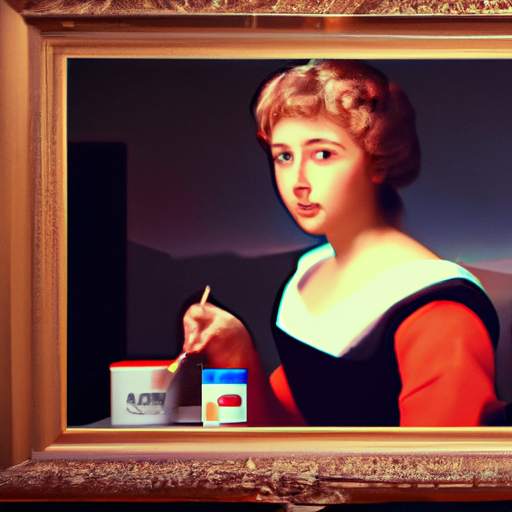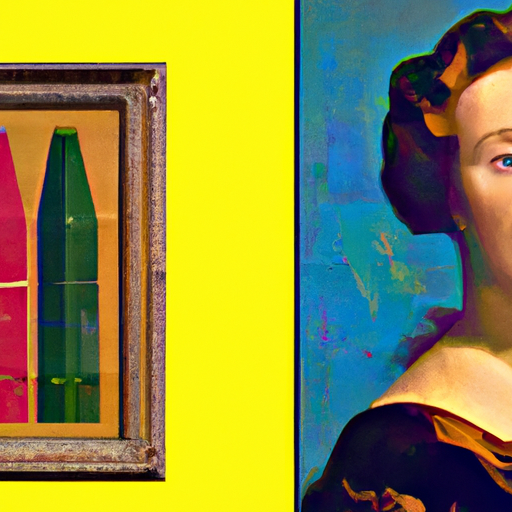
-
Table of Contents
Fine Art Repurposed: How Famous Paintings Sell Products

Art has always been a powerful medium for self-expression and storytelling. Throughout history, famous paintings have captivated audiences with their beauty, emotion, and unique perspectives. However, in recent years, these iconic works of art have found a new purpose – selling products. From advertisements to merchandise, companies have discovered the value of incorporating famous paintings into their marketing strategies. In this article, we will explore how fine art is being repurposed to sell products and the impact it has on both the art world and consumer behavior.
The Rise of Art in Advertising
Art and advertising may seem like unlikely bedfellows, but the two have become increasingly intertwined in recent years. Companies are recognizing the power of art to evoke emotions, create a sense of nostalgia, and establish a connection with consumers. By incorporating famous paintings into their advertisements, brands can tap into the cultural significance and recognition associated with these artworks.
One notable example of art in advertising is the use of Vincent van Gogh’s “Starry Night” in a commercial for a luxury car brand. The ad features a car driving through a starry night landscape reminiscent of van Gogh’s masterpiece. By associating their product with a renowned painting, the car brand aims to convey a sense of elegance, beauty, and timelessness.
Another example is the use of Leonardo da Vinci’s “Mona Lisa” in a campaign for a popular cosmetics brand. The ad features a model with a mysterious smile, reminiscent of the iconic painting. By incorporating the “Mona Lisa” into their marketing, the cosmetics brand aims to convey a sense of beauty, sophistication, and intrigue.
The Impact on Consumer Behavior
The use of famous paintings in advertising can have a significant impact on consumer behavior. Research has shown that consumers are more likely to remember and engage with advertisements that feature art. According to a study conducted by the University of Southern California, ads that incorporate art are perceived as more creative, memorable, and aesthetically pleasing.
Furthermore, the use of art in advertising can also influence consumer perceptions of the brand. A study published in the Journal of Consumer Research found that consumers perceive brands that use art in their advertisements as more sophisticated, cultured, and trustworthy. This positive association can lead to increased brand loyalty and purchase intent.
Additionally, the use of famous paintings in advertising can create a sense of nostalgia and emotional connection with consumers. Many iconic artworks have a rich history and cultural significance, evoking feelings of familiarity and nostalgia. By incorporating these paintings into their marketing, brands can tap into these emotions and establish a deeper connection with their target audience.
Controversies and Criticisms
While the repurposing of famous paintings in advertising has its benefits, it is not without its controversies and criticisms. Some argue that using art in advertisements cheapens the value and integrity of the original artwork. They believe that art should be appreciated for its own sake, rather than being used as a tool for selling products.
There have also been cases where the use of famous paintings in advertising has sparked legal disputes. Artists or their estates may claim copyright infringement or argue that their work is being used without permission or proper compensation. These legal battles highlight the complexities and ethical considerations involved in repurposing art for commercial purposes.
Merchandising and Art Licensing
In addition to advertising, famous paintings are also being repurposed through merchandising and art licensing. Many museums and art institutions have recognized the potential for revenue generation by licensing the images of famous artworks for use on various products.
For example, the Metropolitan Museum of Art in New York City offers a wide range of merchandise featuring famous paintings from their collection. Visitors can purchase everything from t-shirts and tote bags to mugs and magnets adorned with images of iconic artworks. These products not only serve as souvenirs but also allow individuals to incorporate art into their everyday lives.
Art licensing has also become a lucrative business for artists and their estates. By licensing the images of their famous paintings, artists can earn royalties and reach a wider audience. This practice has become particularly popular in the fashion industry, with many designers collaborating with artists to create limited-edition collections featuring iconic artworks.
The Future of Art in Advertising
The repurposing of famous paintings in advertising is likely to continue and evolve in the future. As brands seek to differentiate themselves and create memorable experiences for consumers, art will remain a powerful tool for storytelling and emotional connection.
Advancements in technology, such as augmented reality and virtual reality, may also open up new possibilities for incorporating art into advertising. Imagine being able to step into a virtual gallery and interact with famous paintings as part of an immersive brand experience.
Key Takeaways
- Famous paintings are being repurposed to sell products through advertising, merchandising, and art licensing.
- The use of art in advertising can evoke emotions, create a sense of nostalgia, and establish a connection with consumers.
- Research shows that ads featuring art are perceived as more creative, memorable, and aesthetically pleasing.
- Consumers perceive brands that use art in their advertisements as more sophisticated, cultured, and trustworthy.
- The repurposing of art in advertising is not without controversies and legal disputes.
- Merchandising and art licensing allow individuals to incorporate famous artworks into their everyday lives.
- The future of art in advertising may involve advancements in technology, such as augmented reality and virtual reality.
In conclusion, the repurposing of famous paintings to sell products has become a prevalent trend in the advertising and merchandising industries. By incorporating art into their marketing strategies, brands can tap into the emotional power and cultural significance associated with these iconic artworks. While controversies and legal disputes exist, the use of art in advertising has proven to be effective in influencing consumer behavior and creating a deeper connection with consumers. As technology continues to advance, we can expect to see even more innovative ways in which art is repurposed to sell products in the future.
